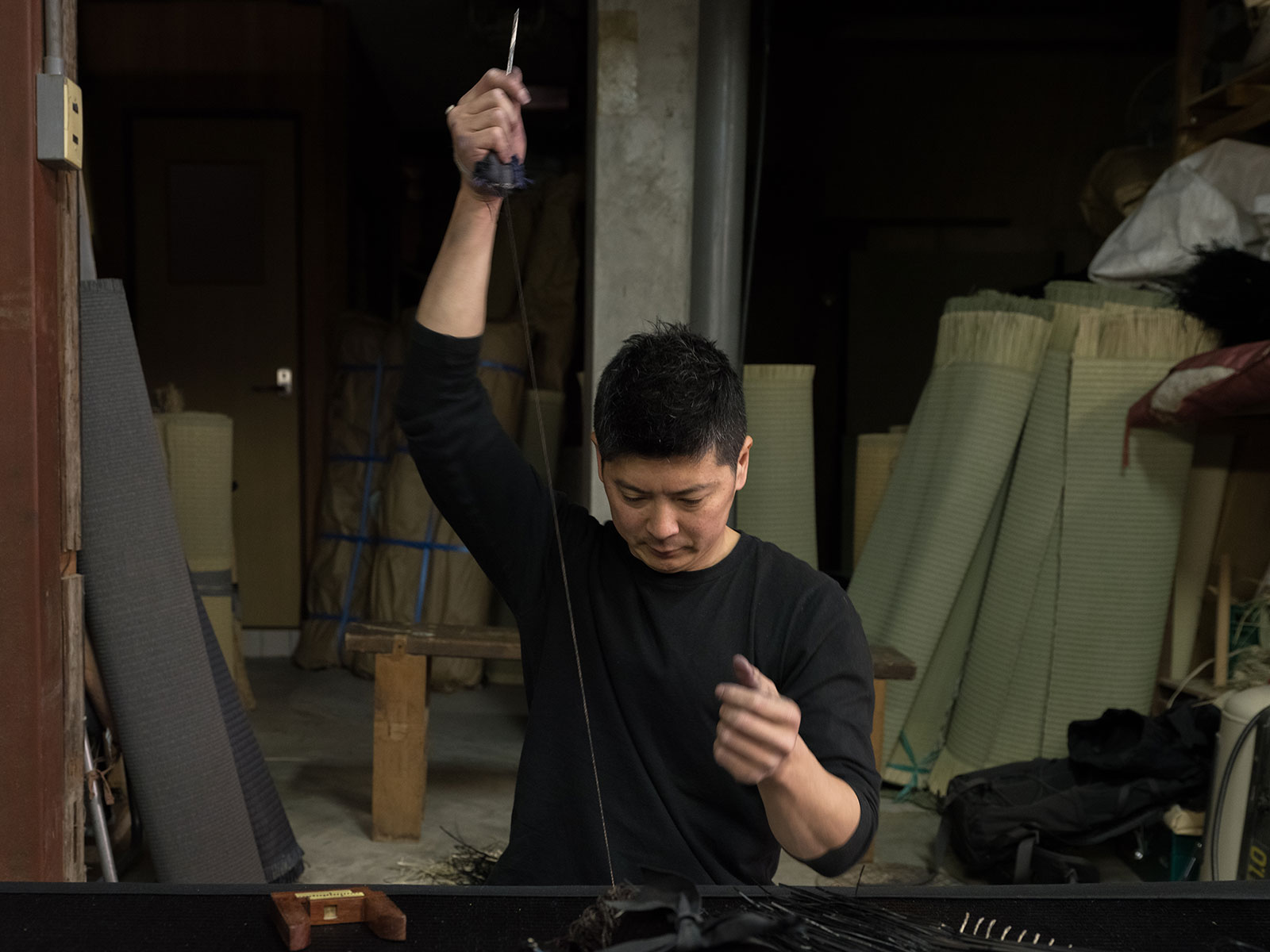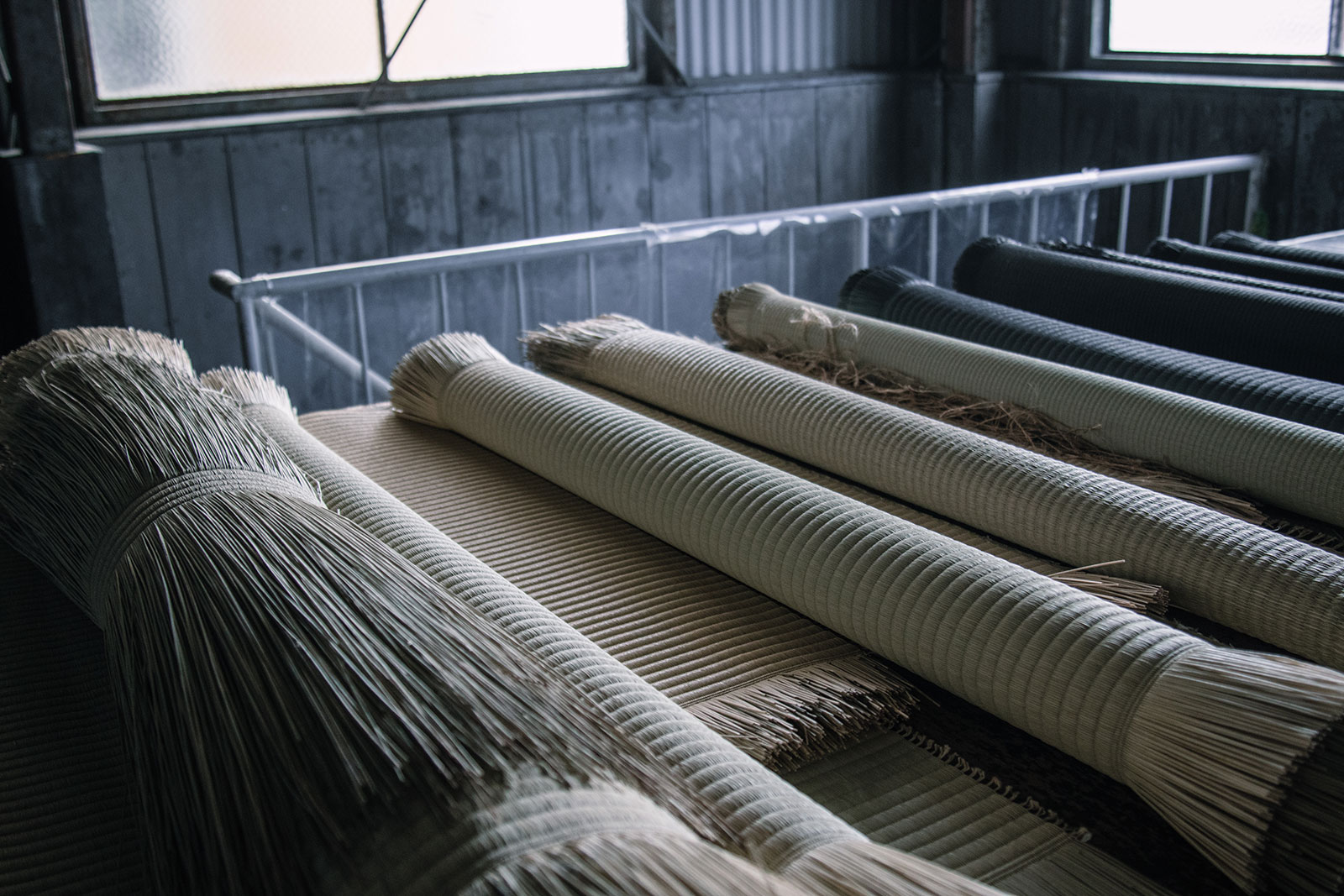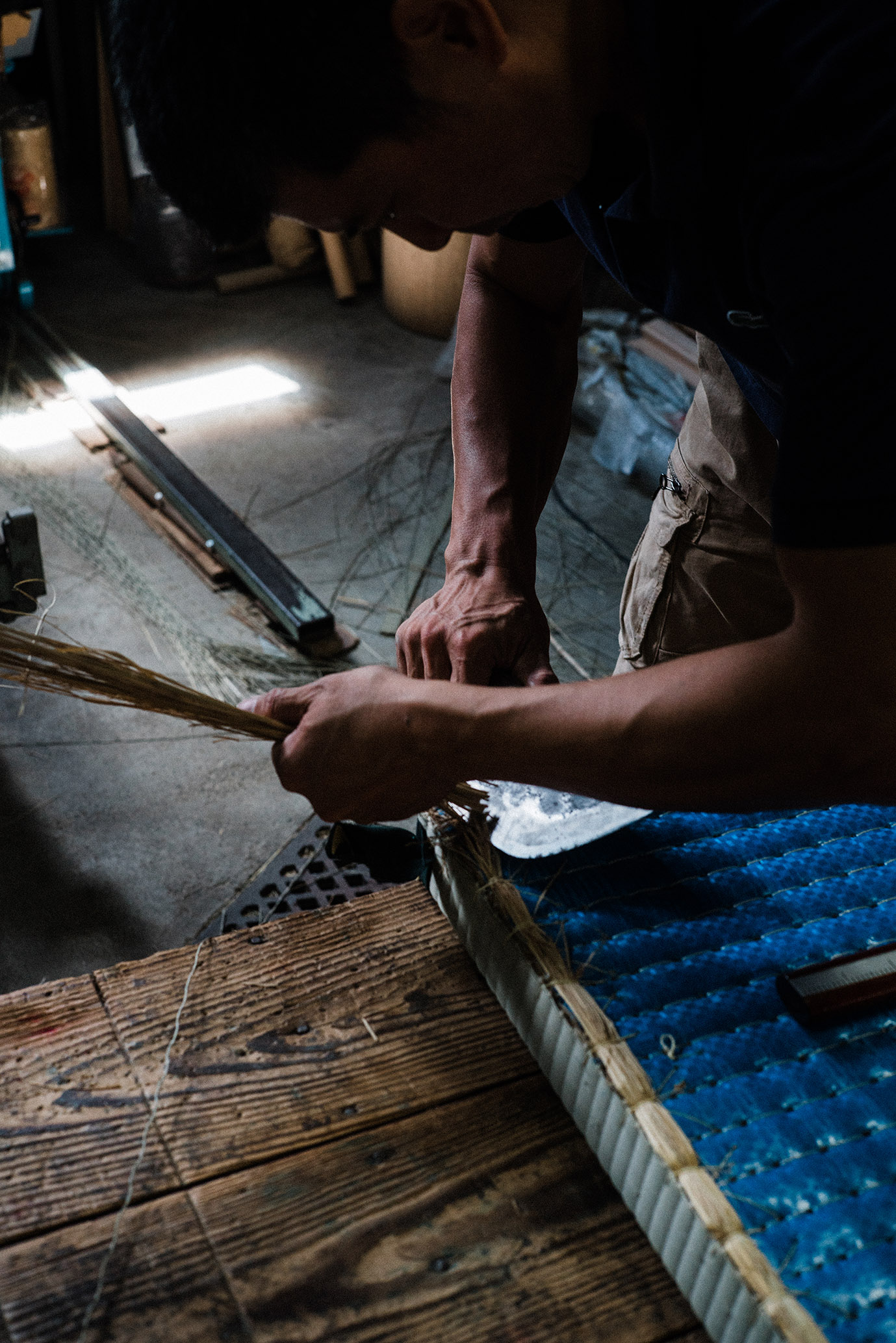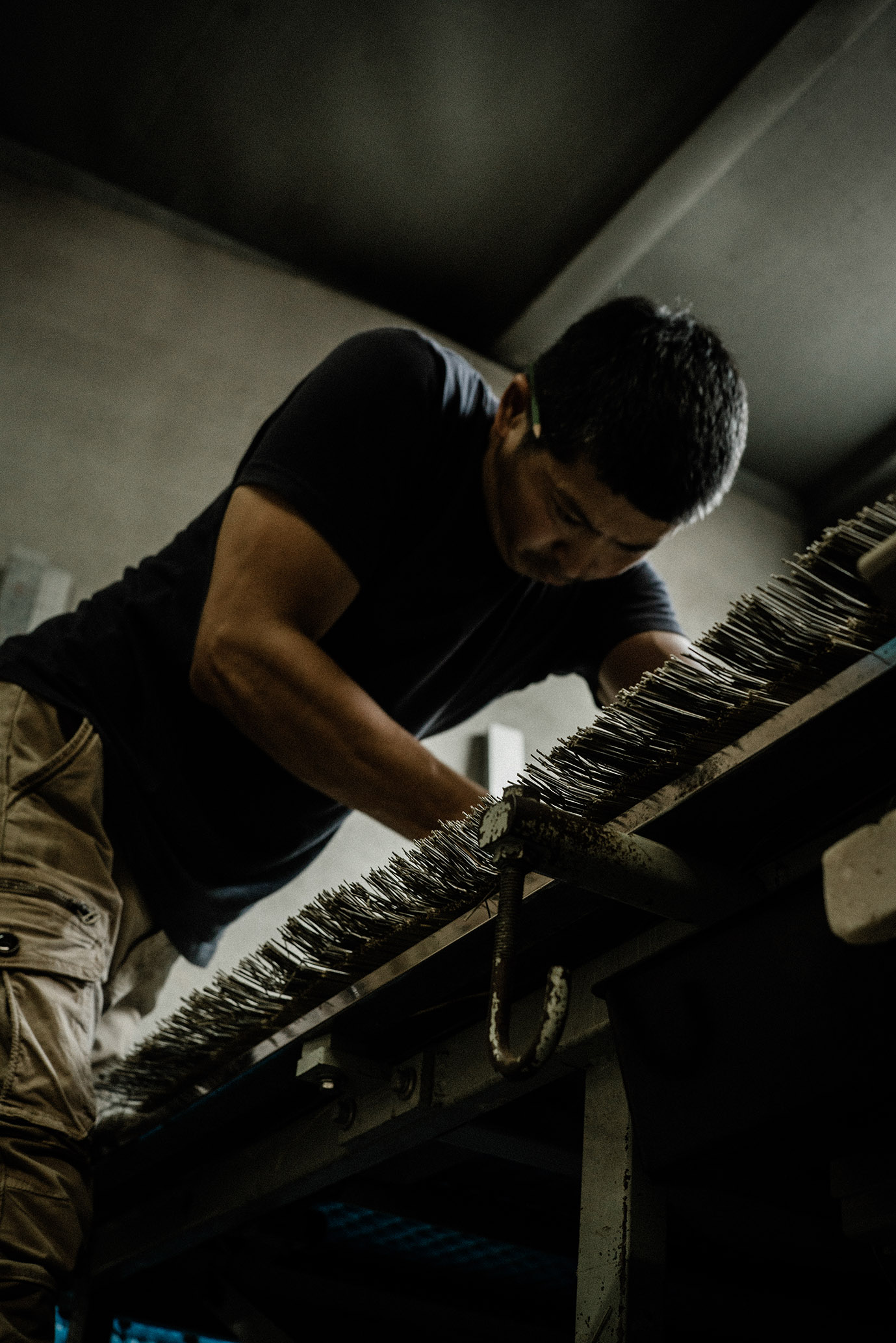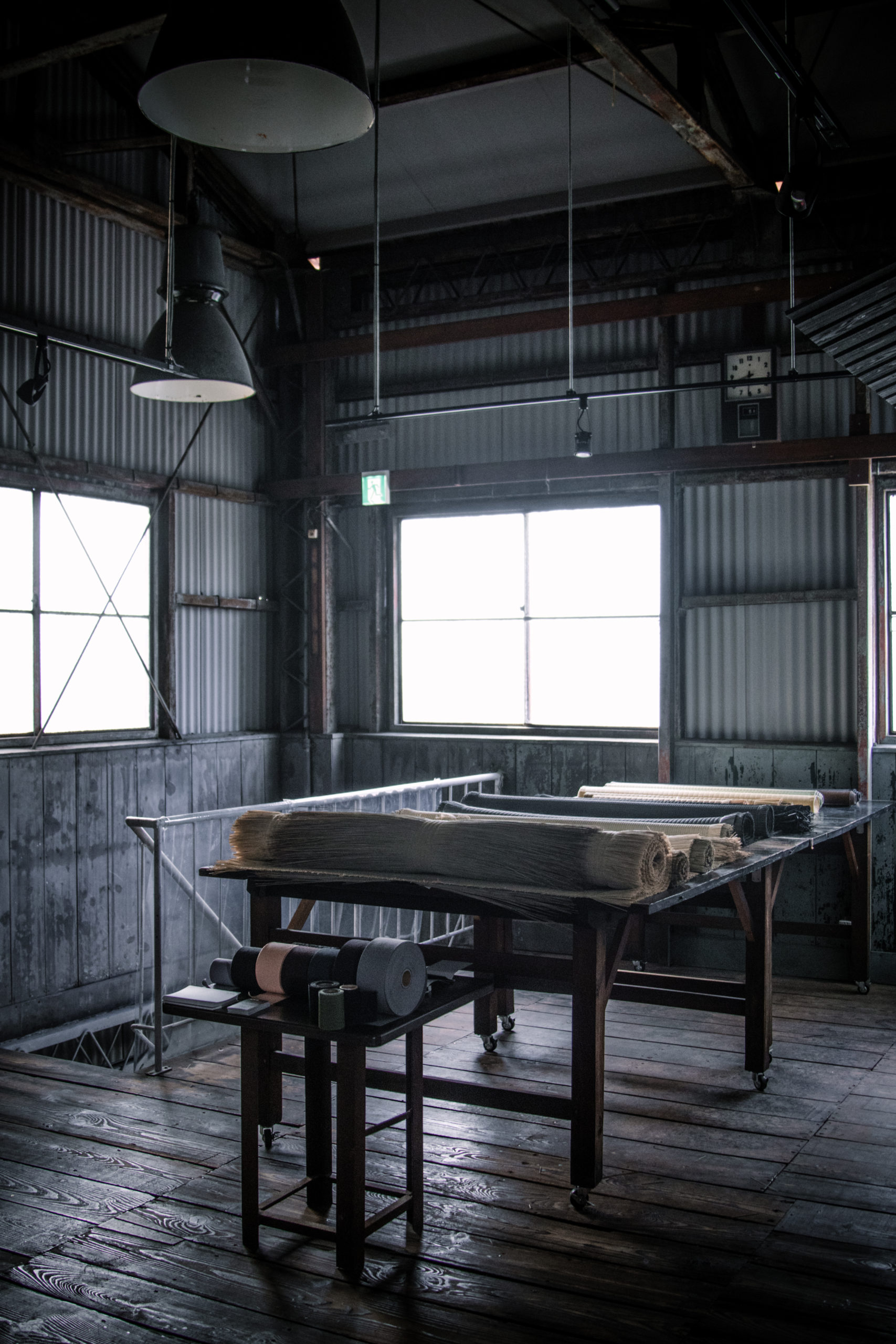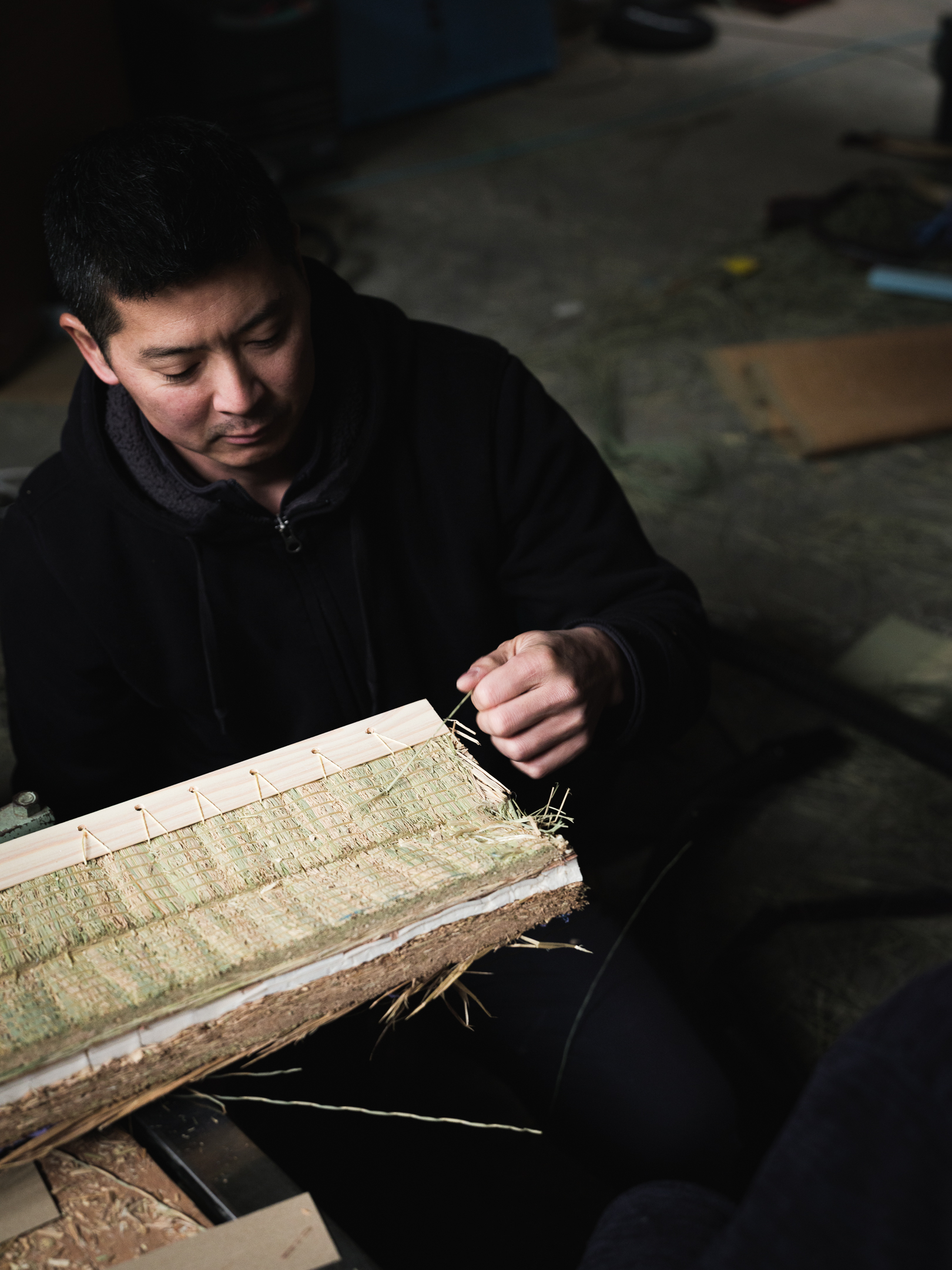Story
When did you decide to become a tatami craftsman, and why?
I was living in Australia and I guess I felt a desire to transmit my culture. I wanted to share something about Japan with the world. I felt that if people could understand something deeper it would be nice, for them and for me! I had been away, and in and out of Japan for so long (in the USA & Europe), looking back I guess I wanted to reconnect too. I wanted something for myself that no one could take away from me, that manifested as a traditional skill. Back in the day, tatami shops only accepted people whose parents were in the tatami industry; the business and skill were inherited. Everyone involved was the son of a tatami craftsman. These days, fewer people are interested in learning about the traditions of tatami-making. When I decided to return to Kyoto and rigorously study tatami in school and as an apprentice, I was lucky to meet one of the kumiai (heads) of the organization. He liked my ideas and take on tatami, and connected me with a fourth generation tatami shop that is over 100 years old, which helped me to enter the industry, now I have my own studio and hopefully I am the first generation of my own family story!
The style of Tatami has been so consistent for hundreds of years. What prompted you to change the traditional design?
It isn’t really changing it, it is just adapting. That is critical today. So many traditional artisans all over the world can not survive with cheap imitations and consumers not knowing the difference in quality. People don’t have so much money anymore so I can understand they look for cheaper options but you can’t compare the quality or the longevity. What I make, and all Japanese craftsman make ages with you. This is an investment in yourself, your life. I really believe that something you have for a long time makes memories with you, fits you. I guess it’s part my culture and partly because I traveled a lot, with no money, so the few possessions I have that actually matter could probably fit in my pocket. That’s not intentional, it just happened like that. Now I have a family so this has changed, but I hope we can always keep this spirit!


